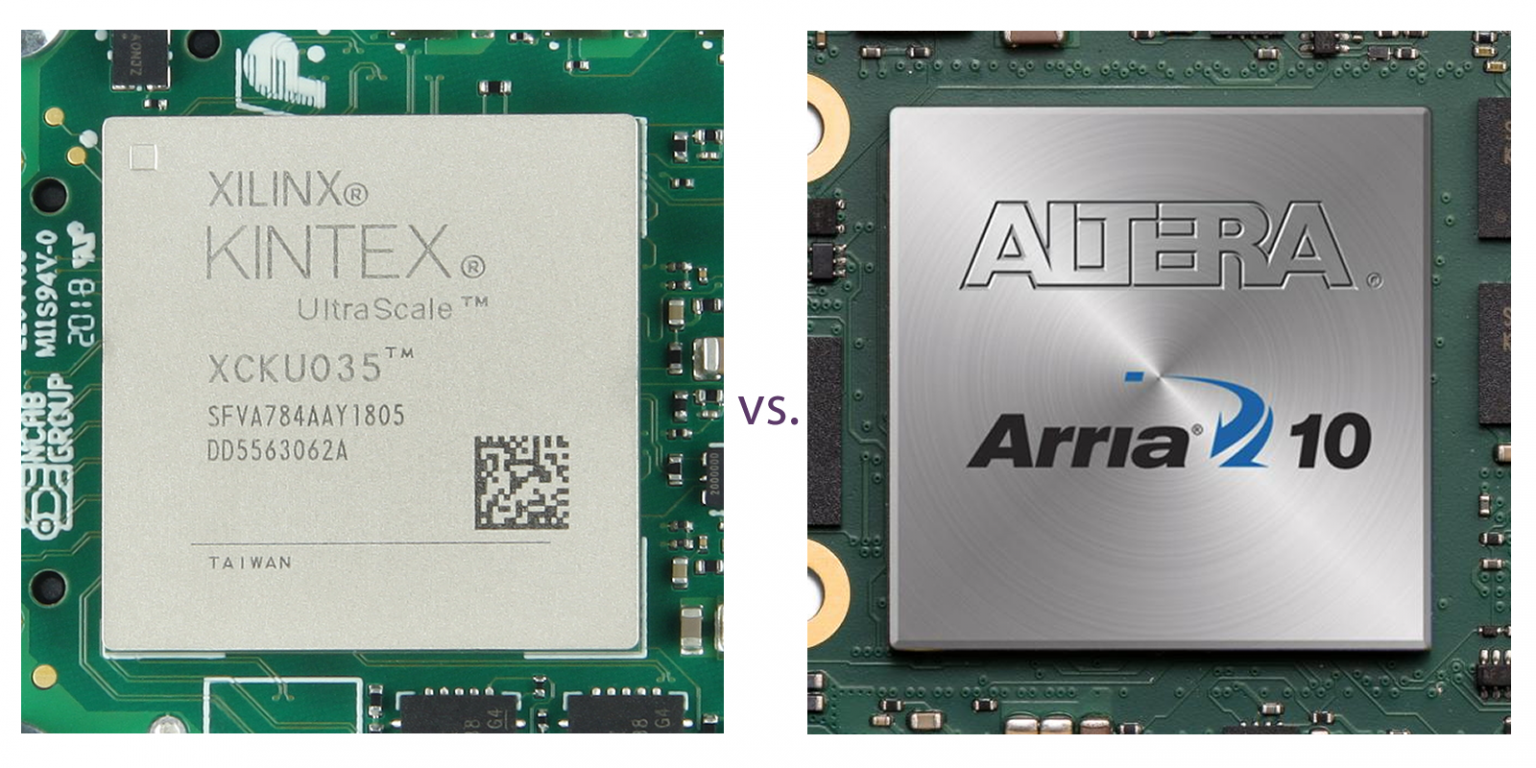Time: 2025-02-19 10:58:03View:
Xilinx (now part of AMD) and Intel (formerly Altera) are the two leading FPGA (Field-Programmable Gate Array) vendors. Both offer powerful and flexible FPGA solutions, but they differ in architecture, tools, ecosystems, and target applications. Below is a detailed comparison to help you understand the differences:

CLB (Configurable Logic Block):
Xilinx FPGAs use a symmetric array of CLBs, which consist of Look-Up Tables (LUTs), flip-flops, and carry logic.
LUTs are typically 6-input (6-LUT) in modern Xilinx devices.
Interconnect:
Hierarchical routing architecture with global and local interconnects.
DSP Slices:
Dedicated DSP blocks for high-performance arithmetic operations.
Block RAM:
Distributed and block RAM for on-chip memory.
Hard IP Cores:
Integrated hard IP blocks for PCIe, Ethernet, memory controllers, and more.
Advanced Features:
Xilinx offers Adaptive Compute Acceleration Platform (ACAP) devices (e.g., Versal), which combine FPGA fabric with AI engines and scalar processors.
ALM (Adaptive Logic Module):
Intel FPGAs use ALMs, which are more flexible than Xilinx CLBs. Each ALM can be split into smaller LUTs (e.g., two 4-LUTs).
Interconnect:
Mesh-based routing architecture.
DSP Blocks:
Dedicated DSP blocks optimized for high-performance arithmetic.
Block RAM:
M20K and MLAB memory blocks for on-chip memory.
Hard IP Cores:
Integrated hard IP blocks for PCIe, Ethernet, memory controllers, and more.
Advanced Features:
Intel offers heterogeneous devices like Agilex, which combine FPGA fabric with AI accelerators and other specialized blocks.
Vivado Design Suite:
Primary tool for designing, synthesizing, and implementing FPGA designs.
Supports high-level synthesis (HLS) for C/C++/OpenCL-based design.
Vitis:
Unified software platform for developing embedded and accelerated applications.
IP Integrator:
Graphical tool for integrating IP cores.
Simulation:
Integrated simulator (XSIM) and support for third-party tools like ModelSim.
Quartus Prime:
Primary tool for designing, synthesizing, and implementing FPGA designs.
Supports high-level synthesis (HLS) for OpenCL-based design.
Intel oneAPI:
Unified programming model for CPUs, GPUs, and FPGAs.
Platform Designer:
Graphical tool for integrating IP cores.
Simulation:
Integrated simulator and support for third-party tools like ModelSim.
IP Cores:
Extensive library of free and paid IP cores for various applications.
Ecosystem:
Strong ecosystem with third-party tools and support.
Popular in high-performance computing, aerospace, and defense.
Partnerships:
Collaborations with major players in AI, automotive, and 5G.
IP Cores:
Comprehensive library of free and paid IP cores.
Ecosystem:
Strong ecosystem with third-party tools and support.
Popular in data centers, networking, and industrial applications.
Partnerships:
Collaborations with major players in AI, automotive, and IoT.
High-Performance Computing:
Versal ACAP devices are optimized for AI, machine learning, and data center acceleration.
Aerospace and Defense:
Radiation-hardened FPGAs for space applications.
5G and Networking:
High-speed transceivers and DSP capabilities for 5G infrastructure.
Automotive:
Solutions for ADAS (Advanced Driver Assistance Systems) and in-vehicle networking.
Data Centers:
Agilex FPGAs are optimized for data center acceleration and AI workloads.
Networking:
High-speed transceivers and packet processing capabilities.
Industrial:
Solutions for factory automation and robotics.
Automotive:
Solutions for ADAS and in-vehicle networking.
Performance:
High-performance devices with advanced DSP and AI capabilities.
Power Efficiency:
Competitive power efficiency, especially in newer devices like Versal.
Performance:
High-performance devices with flexible ALM architecture.
Power Efficiency:
Competitive power efficiency, especially in newer devices like Agilex.
Pricing:
Generally higher prices for high-end devices.
Availability:
Strong global supply chain, but affected by semiconductor shortages.
Pricing:
Competitive pricing, especially for mid-range devices.
Availability:
Strong global supply chain, but affected by semiconductor shortages.
| Feature | Xilinx FPGA | Intel FPGA |
|---|---|---|
| Architecture | Symmetric CLB-based | Flexible ALM-based |
| Development Tools | Vivado, Vitis | Quartus Prime, Intel oneAPI |
| IP Cores | Extensive library | Comprehensive library |
| Target Applications | HPC, Aerospace, 5G, Automotive | Data Centers, Networking, Industrial |
| Performance | High-performance DSP and AI | High-performance with flexible ALMs |
| Power Efficiency | Competitive | Competitive |
| Pricing | Higher for high-end devices | Competitive |
Choose Xilinx if:
You need advanced AI and DSP capabilities (e.g., Versal ACAP).
Your application is in high-performance computing, aerospace, or 5G.
Choose Intel if:
You need flexible logic architecture (e.g., ALM-based).
Your application is in data centers, networking, or industrial automation.
Both Xilinx and Intel offer excellent FPGA solutions, and the choice depends on your specific application requirements, budget, and familiarity with the tools.